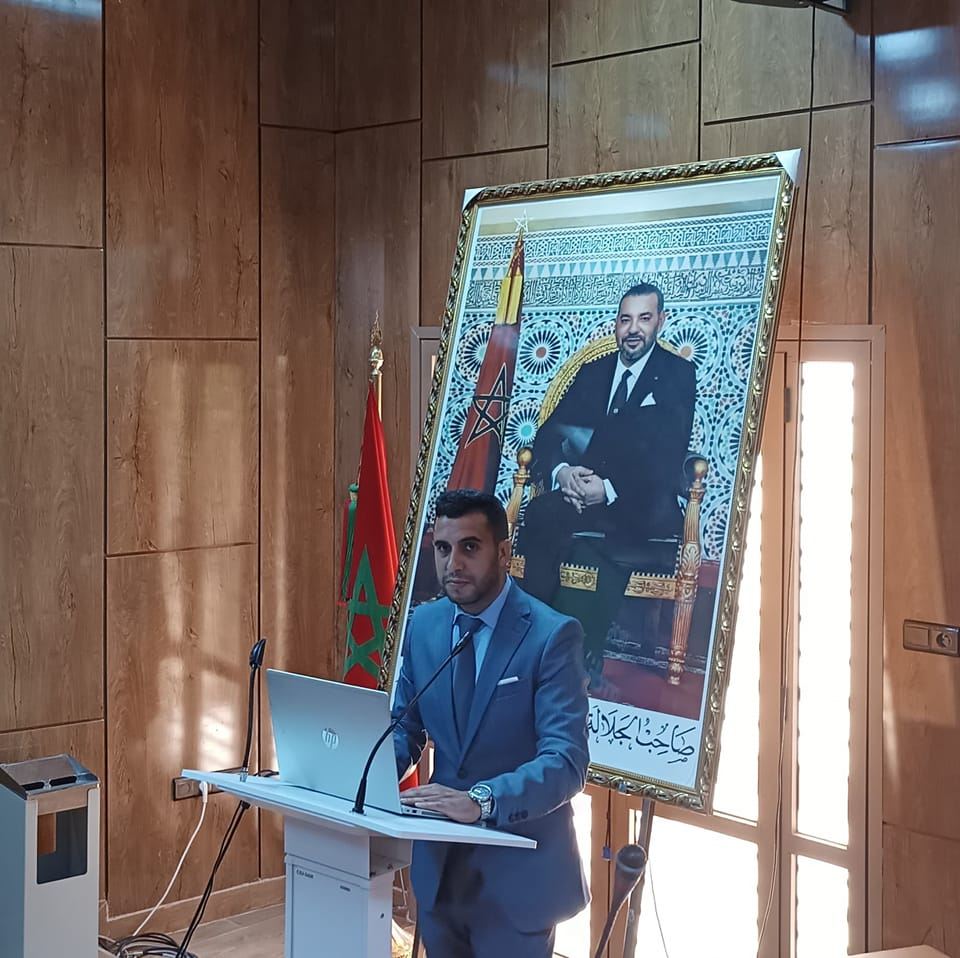Dr. Ihababdelbasset
ANNAKI
Maître de Conférences en Intelligence Artificielle et Développement Avancé
École Supérieure de l'Éducation et de la Formation, Université Mohammed Premier Oujda
Spécialiste en Réalité Virtuelle, Intelligence Artificielle et Séries Temporelles appliquées aux Neurosciences et Processus Cognitifs
Faire Progresser l'Intelligence Artificielle et le Développement Avancé
Mes recherches se concentrent sur l'Intelligence Artificielle et le développement avancé, avec une expertise particulière dans l'application de techniques d'IA modernes aux défis technologiques contemporains. Mon approche combine recherche académique rigoureuse et expérience pratique en consulting.
Je me spécialise dans le développement de solutions IA innovantes, l'architecture de systèmes avancés, et l'accompagnement d'entreprises dans leur transformation numérique. Mon expertise couvre 6 ans de recherche académique et 2 ans d'expérience en consulting technologique.

Publications Sélectionnées
Overview of Data Augmentation Techniques in Time Series Analysis
Time series data analysis is vital in numerous fields, driven by advancements in deep learning and machine learning. This paper presents a comprehensive overview of data augmentation techniques in time series analysis, with a specific focus on their applications within deep learning and machine learning. We commence with a systematic methodology for literature selection, curating 757 articles from prominent databases. Subsequent sections delve into various data augmentation techniques, encompassing traditional approaches like interpolation and advanced methods like Synthetic Data Generation, Generative Adversarial Networks (GANs), and Variational Autoencoders (VAEs). These techniques address complexities inherent in time series data. Moreover, we scrutinize limitations, including computational costs and overfitting risks. However, it's essential to note that our analysis does not end with limitations. We also comprehensively analyzed the advantages and applicability of the techniques under consideration. This holistic evaluation allows us to provide a balanced perspective. In summary, this overview illuminates data augmentation's role in time series analysis within deep and machine-learning contexts. It provides valuable insights for researchers and practitioners, advancing these fields and charting paths for future exploration.
Clustering analysis of human navigation trajectories in a visuospatial memory locomotor task using K-Means and hierarchical agglomerative clustering
Throughout this study, we employed unsupervised machine learning clustering algorithms, namely K-Means [1] and hierarchical agglomerative clustering (HAC) [2], to explore human locomotion and wayfinding using a VR Magic Carpet (VMC) [3], a table test version known as the Corsi Block Tapping task (CBT) [4]. This variation was carried out in the context of a virtual reality experimental setup. The participants were required to memorize a sequence of target positions projected on the rug and walk to each target figuring in the displayed sequence. the participant's trajectory was collected and analyzed from a kinematic perspective. An earlier study [5] identified three different categories, but the classification remained ambiguous, implying that they include both kinds of individuals (normal and patients with cognitive spatial impairments). On this basis, we utilized K-Means and HAC to distinguish the navigation behavior of patients from normal individuals, emphasizing the most important discrepancies and then delving deeper to gain more insights. © The Authors.
Computational Analysis of Human Navigation in a VR Spatial Memory Locomotor Assessment Using Density-Based Clustering Algorithm of Applications with Noise DBSCAN
In this study, we explore human navigation as evaluated by the VR Magic Carpet TM (VMC) [1], a variation of the Corsi Block Tapping task (CBT) [2, 3], employing Density-based spatial clustering of applications with noise (DBSCAN) [4]. As a result of the VMC, we acquired raw spatial data in 3D space, which we processed, analyzed, and turned into trajectories before evaluating them from a kinematic standpoint. Our previous research [5] revealed three unique groupings. However, the categorization remained ambiguous, showing clusters with diverse people (patients and healthy). We utilized DBSCAN to compare patients’ navigation behavior to healthy individuals, highlighting the most notable differences and assessing our existing classifiers. Our research aims to produce insights that may help clinicians and neuroscientists adopt machine learning, especially clustering algorithms, to identify cognitive impairments and analyze human navigation behavior. © 2022, The Author(s), under exclusive license to Springer Nature Switzerland AG.
Expérience Pédagogique
Conférences & Événements
Navigating Africa’s Tech Landscape: Data Availability, Privacy, Compliance, and Global Trust
Join us for an insightful panel discussion on the future of Africa’s technology landscape, focusing on data availability, privacy, compliance, and building global trust. Learn from leading experts about the opportunities and challenges shaping digital transformation across the continent.
Faisons Progresserl'InformatiqueEnsemble
Intéressé par une collaboration, des partenariats de recherche ou une consultation académique ? Je suis toujours ouvert aux conversations significatives sur l'avenir de la technologie et de l'éducation.